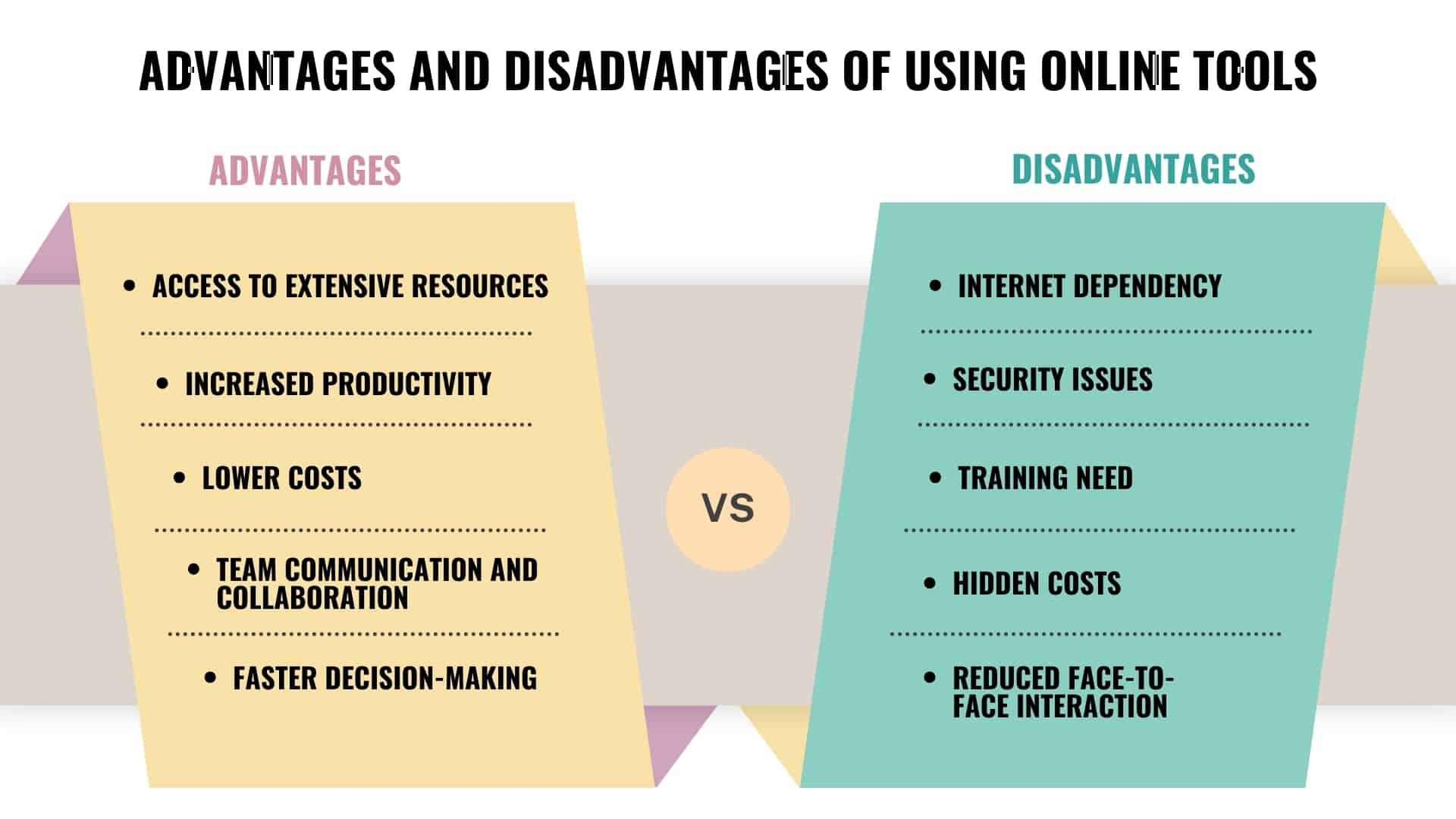Invention and innovation have always been known as the driving force behind of human progress. Through creativity and continuous effort, inventors and innovators have been able to transform the world and turn complex problems into simple and efficient solutions. Although the process of invention and innovation has always been challenging, modern tools can make this path easier.
With the emergence of advanced technologies and the rapid growth of the Internet, online tools have played a unique role in supporting innovators. These tools improved the process of idea generation and development by providing educational resources, design facilities, and communication platforms.
Today’s inventors and innovators can use these technologies to turn their ideas into reality faster. From research and development to marketing and financial management, online tools accompany them at every stage of invention and innovation. However, success in taking advantage of these opportunities requires a thorough understanding with these tools and their intelligent use.
The Importance of Using Online Tools
In today’s competitive world, online tools not only help facilitate the invention process, but also allow inventors to access resources and facilities that were previously difficult to obtain. These tools have created a unique opportunity for inventors by reducing costs, saving time, and increasing efficiency.
Online tools enable inventors to access more accurate and up-to-date data, take team collaboration to a new level, and improve decision-making processes based on documented information. From research and development to marketing and fundraising, these tools cover all aspects of an innovative project.
Moreover, these technologies are specifically designed for inventors and innovators to minimize challenges such as resource limitation, lack of access to specialized networks, and time management. This allows them to focus more on creativity and solving complex problems. In this article, we will explore the types of online tools and their role in facilitating the process of invention and innovation.
- Online Tools for Idea Management and Team Collaboration
One of the first steps in inventing and innovating is collecting and managing ideas. Online tools like Trello, Asana, and Monday.com help teams organize ideas and manage work schedules. These tools provide visual boards to track tasks and accurately schedule projects. Users can assign tasks to team members, set deadlines, and view the progress of tasks at a glance.
Tools like Slack and Microsoft Teams are also very useful for better collaboration in distributed teams. These tools enable quick and centralized communication through chat, video calling, and file sharing. Furthermore, the ability to integrate with other project management tools provides a seamless and efficient experience for teams.
- Online Tools for Research and Information Gathering
Research and careful review are a vital part of the invention process. Online tools such as Google Scholar, PubMed, and Scopus provide access to vast resources of scientific articles, specialized research, and case studies. Users can search articles by keywords and access new and relevant research in their fields.
To analyze data and discovery of new trends in the market, tools like Statista and TrendHunter are helpful. These tools provide statistical information, market analysis, and predictions of future trends that help in the shaping of innovative ideas. Statista is especially useful for accessing global data on various topics, while TrendHunter focuses on discovering innovations and emerging trends.
- Tools for Simplifying Research and Development
Research and development (R&D) is a fundamental step in the process of invention and innovation. There are several online tools that make this process easier and more efficient. RIT Engine is one of the key tools in this area, which allows users to quickly gather the information they need for their projects by providing features such as searching scientific databases and analyzing data.
Another powerful tool in this field is SciFinder, which allows researchers to perform advanced searches in scientific articles and patents. This tool helps inventors discover new innovations and improve their ideas by accessing extensive data.
Additionally, tools like ResearchGate and Mendeley assist researchers in connecting with scientific networks and organizing their resources. As a scholarly social platform, ResearchGate facilitates communication between researchers, while Mendeley is very useful for managing scientific resources and creating digital libraries.
For data analysis, tools like MATLAB and Tableau can also be useful in the R&D process. MATLAB is designed for numerical analysis and advanced simulation, while Tableau allows users to present complex data visually.
- Tools for Design and Prototyping
After forming an idea, product design and prototyping are crucial. Tools like AutoCAD, Fusion 360, and SolidWorks enable users to create detailed 3D designs. These software are designed for engineers, industrial designers, and professional inventors and offer extensive features, including mechanical simulation and stress analysis.
For beginners or those seeking for simpler tools, TinkerCAD and Blender are good choices. TinkerCAD is especially useful for quickly designing 3D models and preparing them for 3D printing. Meanwhile, Blender offers extensive 3D animation and rendering capabilities that allow designers to present their projects with greater detail.
- Tools for Protecting Intellectual Property
One of the major concerns for inventors is protecting their ideas. Tools like the USPTO (United States Patent and Trademark Office) and WIPO (World Intellectual Property Organization) have simplified the process of patent and trademark registration. These tools enable users to search databases to check for prior patent registrations and submit applications online.
Tools like Google Patents and PatSnap are also very useful for prior patent searching and analyzing the competitive landscape in the market. PatSnap is particularly an advanced tool for analyzing patents and identifying innovation opportunities.
- Financial Tools and Fundraising
Raising capital to implement ideas is one of the biggest challenges for inventors. Crowdfunding platforms like Kickstarter and Indiegogo allow users to introduce their ideas to a large community of potential investors. Kickstarter has been particularly successful for creative projects such as art, innovative technologies, and industrial designs. Indiegogo also gives inventors more freedom to choose a variety of projects, from scientific instruments to consumer products.
These platforms cover popular categories such as technology, health, and entertainment, helping inventors better identify their target audience. They also increase the chances of raising capital by providing tools such as professional templates for creating promotional videos, simple graphic design tools, and the ability to customize project pages. For example, users can create videos that tell the story behind their idea or design attractive graphics to showcase their product features. These capabilities make projects appealing and increase the likelihood of attracting investors’ attention.
For managing financial resources, tools like QuickBooks and Wave offer comprehensive solutions. QuickBooks allows for accounting management, generating financial reports, and tracking expenses, while Wave is more suitable for small and startup businesses.
- RIT Engine: A Multifunctional Tool for Innovation
RIT Engine is an advanced and multifunctional tool designed specifically for inventors and innovators. It provides a comprehensive platform that covers the various stages of the innovation process, from ideation to commercialization. Key features of the tool include:
- Idea Management: Users can store and organize their ideas in a centralized environment. This feature allows for idea classification, prioritization, and complete documentation.
- Team Collaboration: With features like internal discussions, file sharing, and task tracking, this tool enables teams to work more collaboratively.
- Research and Development: RIT Engine integrates with research databases to provide quick access to scientific resources and related patents.
- Design and Prototyping: This tool allows for initial product designs and the creation of 3D models using user-friendly interfaces.
- Intellectual Property Management: Users can manage information related to patents, trademarks, and other aspects of intellectual property.
This tool is particularly useful for inventors seeking for an all-in-one solution due to its comprehensive coverage of all stages of innovation.
- Marketing and Business Development Tools
After a product is launched, marketing and customer acquisition become critically important. Digital marketing tools like Google Ads and Facebook Ads allow users to design targeted advertising campaigns and reach the desired audience. These tools provide detailed reports on campaign performance, which is invaluable for optimizing marketing strategies.
Web analytics tools like Google Analytics and Hotjar also enable inventors to track user behavior on their websites and applications. These insights are crucial for improving the user experience and increasing customer conversion rates.
- Educational and Learning Tools
Continuous learning is essential to thrive in the world of invention and innovation. Online learning platforms like Coursera, edX, and Udemy allow users to learn new skills. These platforms provide specialized courses in topics like design, project management, and marketing, which can be very useful for inventors.
Additionally, online communities like Reddit provide a space for sharing ideas and learning from others’ experiences. These forums can help inventors find answers to specific questions or explore solutions to similar challenges.
Case Studies on the Impact of Online Tools on Project Success
Many large and innovative companies in the world use online tools to optimize their workflows. For example:
- Tesla: This company utilizes advanced design and simulation tools like AutoCAD and SolidWorks to design and develop electric vehicles. Additionally, Tesla improves its research and development processes using data analysis tools like Tableau and Python.
- Google: As one of the leading technology companies, Google uses project management tools such as Asana and Slack to facilitate collaboration among its various teams. It also develops internal research tools and advanced data analysis systems for its innovations.
- Amazon: The e-commerce giant uses data analytics tools like AWS Analytics to enhance customer experiences and identify market trends. Online marketing tools like Google Ads and Facebook Ads also play a significant role in developing the company’s marketing strategies.
- Siemens: This industrial company uses research and development tools like MATLAB and Simulink for complex analyses and industrial simulations. Siemens also uses project management platforms to coordinate its engineering teams effectively.
Advantages and Disadvantages of Using Online Tools
The use of online tools for inventors and innovators has remarkable advantages and disadvantages. Being aware of these can help in making better decisions.

Advantages:
- Access to Extensive Resources: Online tools enable inventors to access research materials, scientific articles, and marketing data from anywhere in the world.
- Increased Productivity: These tools simplify complex processes and allow for better time and task management.
- Lower Costs: Many online tools are free or affordable, reducing the need for physical infrastructure.
- Team Communication and Collaboration: Tools like Slack and Microsoft Teams help teams collaborate more effectively.
- Faster Decision-Making: Online tools provide the necessary information for analysis and decision-making more quickly and accurately.
Disadvantages:
- Internet Dependency: A stable Internet connection is essential to access these tools, which can be challenging in some areas.
- Security Issues: Using online tools may cause risks such as confidential information disclosure or cyberattacks.
- Training Need: Optimal use of these tools requires knowledge and awareness, which may be challenging for some users.
- Hidden Costs: Some tools have additional fees or advanced paid versions that may create a financial burden.
- Reduced Face-to-Face Interaction: Excessive use of online tools can lead to reduced in-person communication and team interaction challenges.
Conclusion
Online tools provide a wide range of possibilities for inventors and innovators. These tools play a critical role in all stages of invention, from ideation and research to design and marketing. By providing smart tools and rich resources, these technologies help inventors simplify complex processes and increase their productivity.
One of the standout features of these tools is their ability to facilitate team collaboration. Using tools like RIT Engine, teams can focus on projects, manage ideas, and leverage research and design resources to drive innovation. These tools not only speed up the invention process, but also enable teams to work more efficiently.
Additionally, online tools play a crucial role in commercializing ideas. Platforms for fundraising, market analysis, and digital marketing allow innovators to present their products professionally and reach their target audience. These tools provide greater opportunities for success by reducing the costs and time required to enter the market.
Finally, RIT provides a platform to support inventors and innovators by providing educational resources and tools like the RIT Engine. These platforms can inspire a new generation of inventors who are looking for innovative solutions to global challenges. Using these tools wisely paves the way for positive and sustainable impact.
“Even if we do not talk about 5G (specifically), the security talent in general in the country is very sparse at the moment. We need to get more (security) professionals in the system”
“This article was generated with the assistance of AI and edited by our team to ensure accuracy and quality.”






